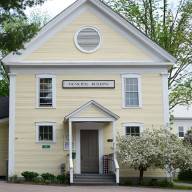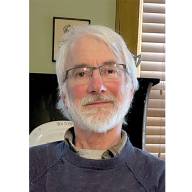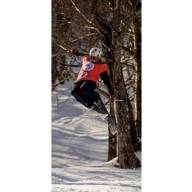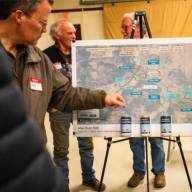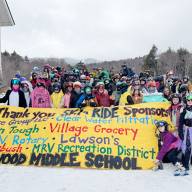In order to write about the renovation of St. Patrick Church in Moretown, I got a tour from Father Matthew Rensch. I expected to “Oooo” and “Ahhh” over the work that had been done but not to fall down a rabbit hole of history that was filled with the stories of Irish people in Vermont. As I stated in that article, I was raised Irish Catholic. In fact, I was almost 10 years old before I found out that you could be of Irish lineage and not be a Catholic. But all the Irish-Americans I met in my childhood spoke with the accent of the tri-state area of Manhattan. Having lived in New England for 36 years I have had to accept that many have a Boston accent as well. But Vermont? That idea was not on my radar.
During that tour I learned about an Irish settlement of immigrants in Moretown. It made me want to get some questions answered. I knew there had been mass starvation in Ireland in the 1800s, particularly in the west and south, where Irish was the predominant language. Millions of people died in Ireland and another million fled.
The immigrants who arrived en masse to our Valley must have been half starved and largely unable to speak English. This had to present problems for survival. I knew Moretown resident, Denise Gabaree, as the president of the Moretown Historical Society and I gave her a call.
I said, “Denise, I want to know more about the original settlers of Paddy Hill. Do you have any documents where someone wrote about them? Or do you know any of the direct descendants of those families?”
Denise said, “Well, Mary Reagan wrote about the history of Moretown.”
“Reagan? Like the family that has the big headstone in St. Patrick Cemetery?”
“Yes. And she was my aunt.”
“What?!”
“That’s right, I’m a Reagan too. Reagan is my maiden name.”
“Good Lord. You are blowing my mind. So, your family is one of the original Irish settlers.” It occurred to me that she must know where the original church once stood, the schoolhouse that held as many as 60 students, and most importantly — the Altar Rock where the first mass had been celebrated.
“I found St. Patrick Cemetery, Denise, but I couldn’t find the Altar Rock.”
“Don’t worry, I’ll show you where it is.” And she was as good as her word.
It was 1853 when that mass was said by a traveling priest named Father O'Callaghan. As there was no church yet, he said the service outdoors.
The outdoor mass reminded me of a time of religious persecution of Irish Catholics in the 16th through the 18th century. As part of ethnic cleansing of Irish language and tradition, a Protestant England prohibited the religious observance on pain of death. Catholics gathered in fields and forests where mass was celebrated in secret. “Mass Rocks” were common. So, an “Altar Rock” was nothing new to the folks up on Paddy Hill.
As long as we’re taking a break to catch you up on Irish history, you will need a little lesson on surname variants in the ancient Irish families: When the Brits took control, they tried to Anglicize Irish spellings of people’s last names. The family of O’Ceallachán (Like the good Father O'Callaghan who said the first Mass) was changed to O'Callaghan, O’Callahan, Callahan, Callaghan, Kelaghan and several other spellings. Coming to the United States didn’t help matters and mistakes by officials were often made on public records.
Mary J. Reagan understood the good father’s name to be O'Callaghan. But according to material on file at the Historical Society in Montpelier, a newspaper record states, “. . . there is a marker which was erected in memory of a Father O'Calligan who said the first mass in Moretown . . .” Another author, Howard Coffin, wrote a brief history of the Roman Catholic Diocese of Burlington, and he agrees with Ms. Reagan’s spelling of O’Callaghan, and it is persuasive that his named is engraved that way at the Altar Stone.
In Mary Reagan’s account she says, “The Father O'Callaghan mentioned was the first resident priest in the state of Vermont and he traveled throughout the state visiting the missions. . .
From the diocese’s archives: “The first [Catholic] church[in Moretown] was built by Father Druon about 1857 in the center of the cemetery, which was purchased by deed of March 15, 1841. The second was constructed by Father Galligan in Moretown Hollow in 1882, on the lands bought from Francis Hassett, by deed of May 8, 1882.”
And what about those families? Mary writes, “The Goss family, ancestors of one of our present parishioners [of St. Patrick Church in 1973], was among the earliest settlers. Other families who settled there were mainly Irish immigrants who came to this country in the mid 1800s. According to Hemmingway’s Gazetteer (VT) of 1882, on file at the Vermont Historical Society, the Catholics in Moretown were mostly Irish. They purchased land on South Hill or "Paddy Hill" as it is sometimes called and some of the first settlers were Daniel Murray, John Hogan, Patrick Calvy, Patrick Farral and Daniel Devine. Other early settlers were the Flannagans, Murphys, McCarthys, Lees, Costellos, Donahues, Keltys, Hassetts, Lynchs and Kerins. Decedents of these families can still be found here and in nearby towns.
“Records state that most of these early settlers commenced with very little means but by industry and hard work had prospered and by 1882 would average with other townsmen in wealth. It is interesting to note that records show there was a school on South Hill, located across from the Gove Farm turn, which gave instruction to the 60 children at one time, mostly Irish. Part of the foundation of this school building can still be found there.
“According to newspaper records of 1879, the Catholic Society contemplated building a new Church in the village or "Hollow" as it was sometimes called. Town records show that on April 20, 1882, property owned by George Fletcher was deeded to Francis Hassett and he in turn deeded it to Louis de Goesbriand, the first bishop of the Burlington Diocese. This was in May 1882.
“Unconfirmed sources state that parts of the original church on South Hill were used to build the new church in town.” I have heard many people say that many of the stained glass windows are original to the first church, but then some say the entire church was moved down the hill. How that could be accomplished I don’t know.
Mary Reagan gives one final interesting fact. The original altar of St. Patrick Church was replaced by an altar that was in the private chapel in the Trapp Family Lodge. “Mr. and Mrs. von Trapp were married at this altar.” Apparently they offered it to several churches, but it wound up in the Mad River Valley.




